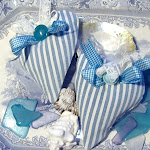Hi! We are having our usual very hot, very sunny summer in September weather for the next few weeks. Autumn seems far far away, for now. A few weeks ago I mentioned peeking over the seawall and seeing yellow wildflowers blooming in the back dunes.
Then recently I was reading the September chapter of my Celia Lewis natural history book---I enjoy reading her observations of nature each month, despite her location in Britain and somewhat skewed seasons.
Previously blooming were a few black-eye susans and coreopsis. Maybe washed or blown in seeds, as they don't usually grow wild here.
This time I found this familiar tall plant that may perhaps be Evening Primrose.
We call it Dune Mallow, though is fairly certain it's not a mallow. Mallows are pink and look like hibiscus. But the primrose ID is, to me, suspect too.
I saw there were a lot of these spare almost alpine yellow pompom flowers.
They grow both tall, maybe 14" and also low to the ground, 2" height. I am still not sure what they are.
The sowthistle ID says all varieties have spiky thistle-y leaves; these to do not.
Another newcomer, a grain, like rye, maybe. Sea oats? Usually the only grasses are phragmites and dune grass.
The wintering birds will like this!
Other finds: Queen Anne's lace, new to the swale area.
Soapwort?
and old standbys like Tumbleweed.
And pretty blue bayberry.
and an old page from my nature diary. More on nature diaries and nature books maybe next week.
Another page from my filled up nature diary. My wildflower finds aren't as beautiful or as lush; life in the sand dunes is dry and sparse. This drawing is by Marjolein Bastin.
Have a great week! Enjoy these late summer days.
love
lizzy
gone to the beach...











































.jpg)















Hmm, maybe you'd have better luck IDing the wildflowers with a book of North American wildflowers. I have an older copy of the Reader's Digest "North American Wildlife" which has birds, animals, an assortment of insects (not all, of course!), trees, and wildflowers with drawings and growing ranges. It got used a lot when my girls were young and constantly wanting to know what something was called. At least with your photos you can compare to books, lol - much quicker and maybe more accurate than drawings (for most of us, anyway!) for later ID.
ReplyDeleteNice to see the dunes have recovered so much. Time will tell if some of the plants are mistakes, I guess.
We are starting to have slightly cooler days and nights here. With all the rain this summer I'm hoping for a colorful fall, hopefully one that's long enough for us to enjoy it! No snow on Halloween, I hope!
Thanks for taking us on your dune walk!
I enjoyed seeing all those "wild" flowers--who would've thought they'd grow in that dune area??I've really only seen rosehips bushes along our beach walking areas...and plenty of poison ivy--unfortunately...
ReplyDeleteMy son and DIL take Fiona and Willa on many Nature walks and they are into identifying and writing down plants they see and then coming home and drawing them...what fun....
We are so looking forward to the anticipated cold front supposedly to sweep over us tonight...enough with the humid weather already!! hugs, Julierose
Very fun to scroll through your nature photos. Keeping a nature journal is a really neat idea.
ReplyDeleteYou have such a diverse selection of beach plants. It's like an exciting treasure hunt. I could imagine children competing to find one more flower, grass or berry. So good that you've documented your finds.
ReplyDeleteI'm still smiling at the sun bathing pug! Was that pic Mo pretending to be invisible, hoping you can't see him if he can't see you and go for a walk or is it a tired pug after a walk? He has perfected the art of relaxation. So funny. Penny
How fun to see a close up of what's growing in the dunes!!
ReplyDeleteWas Mo sittin' in the corner cause he was in trouble? Or just looking cute?! LOL
I loved my lesson on flowers. So many different kinds. So cool. Curious, are you able to see the light tribute on the 11th from your house? Kit
ReplyDelete